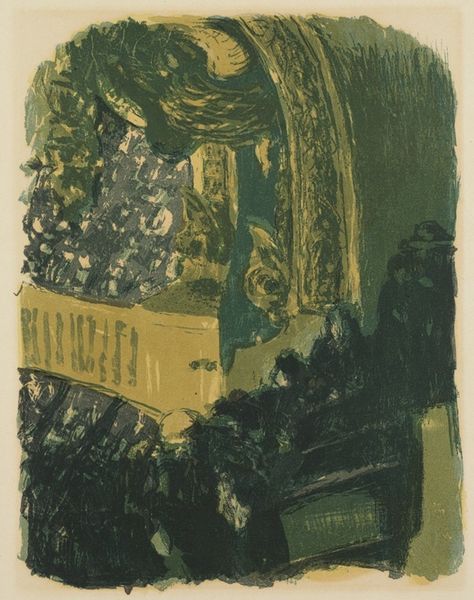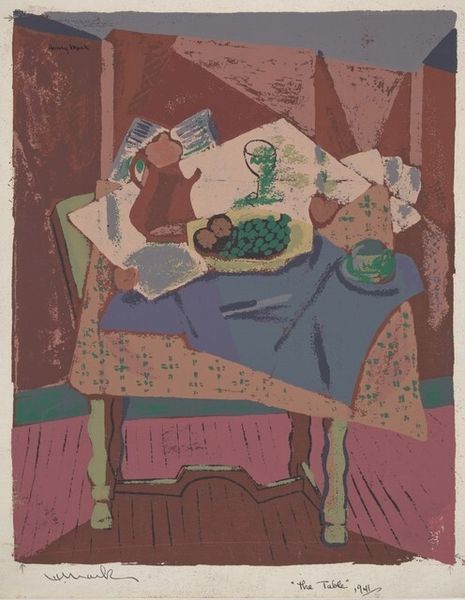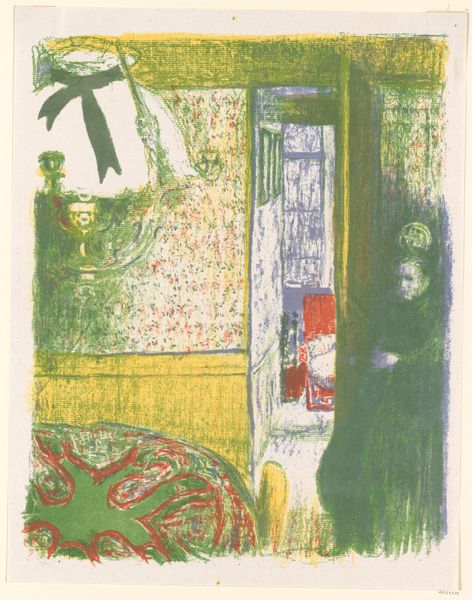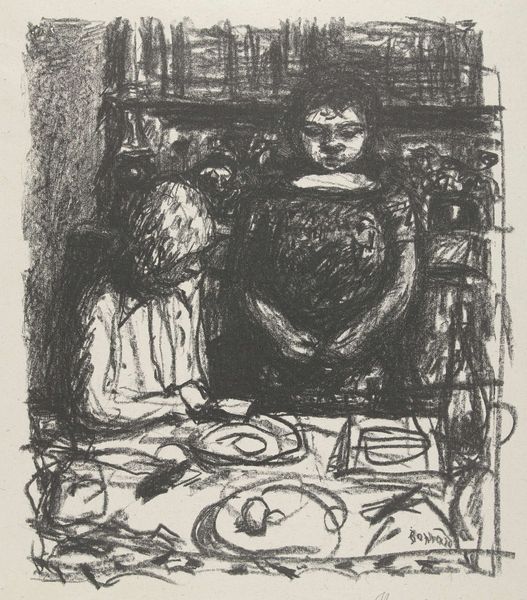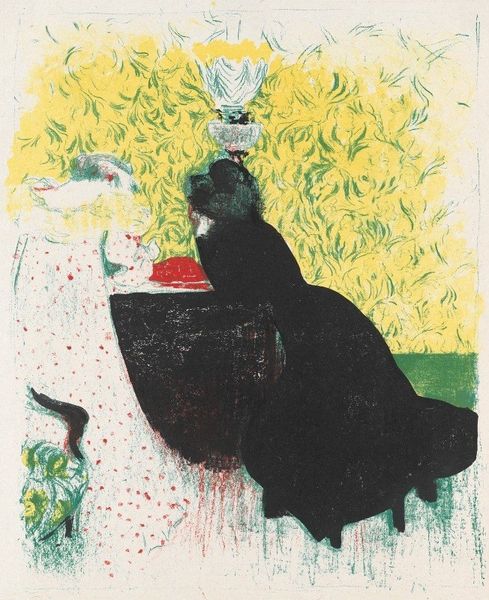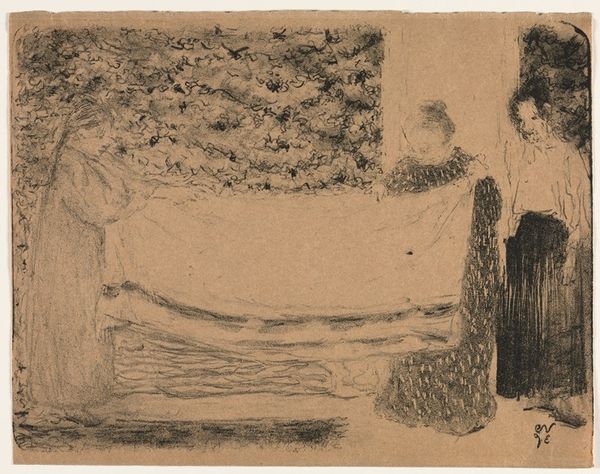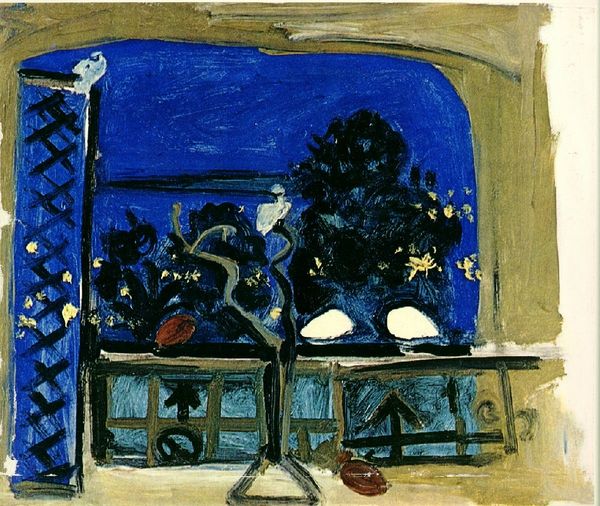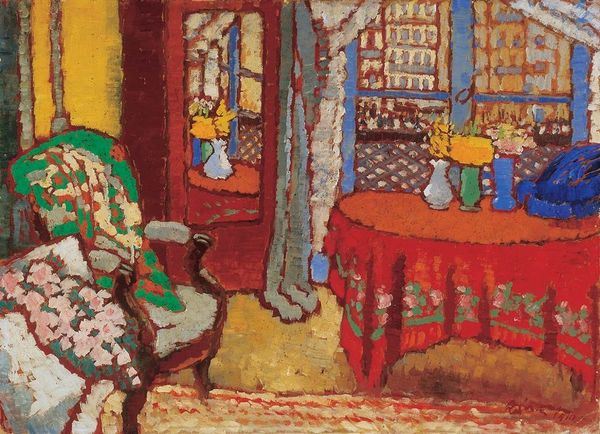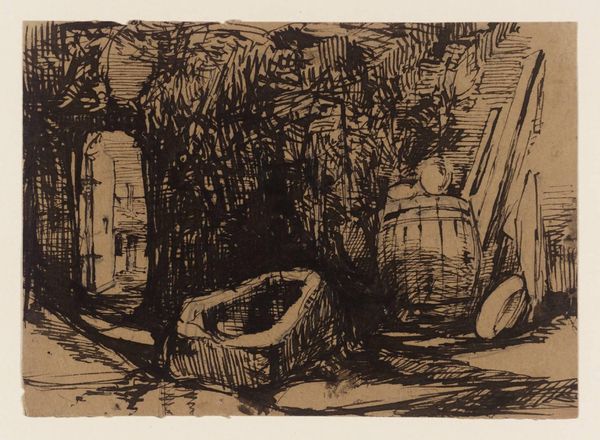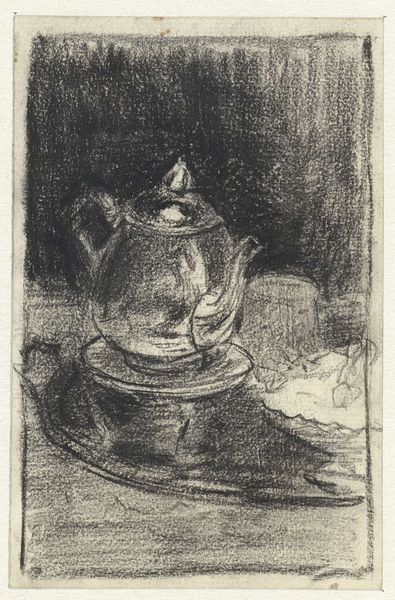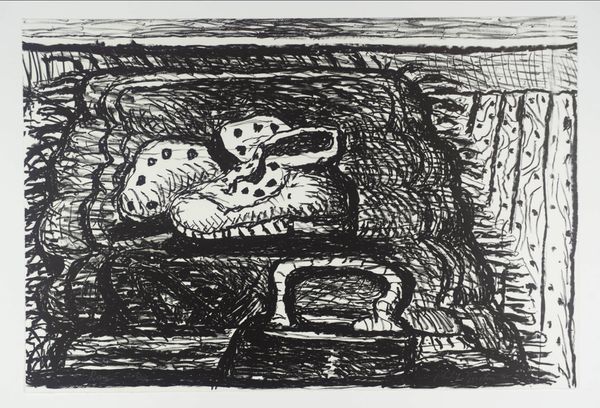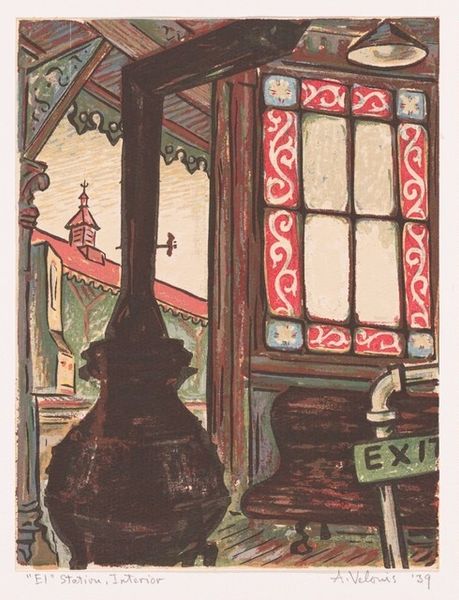
Copyright: Public Domain: Artvee
Édouard Vuillard created this intimate scene, Maternité, between 1895 and 1896, using lithography. It is a print, a medium that lends itself to repetition and accessibility. The composition is a rich tapestry of textures and patterns. Look closely, and you can see how Vuillard plays with the flat, somewhat granular quality inherent to lithographic ink on paper. The table is draped with two cloths – one a dense field of floral motifs, the other a bold red grid, each creating a distinct visual rhythm. The figures, a mother and child, are nestled within the domestic space, their forms softened and almost dissolving into the surrounding patterns. Vuillard was associated with the Nabis, artists who blurred the boundaries between art and everyday life. Lithography allowed artists to disseminate their work more widely, connecting with a broader audience, and challenging traditional notions of artistic value. By embracing printmaking, Vuillard democratized the image, making it available beyond the confines of galleries and wealthy collectors, and intertwining art with the fabric of daily experience.
Comments
No comments
Be the first to comment and join the conversation on the ultimate creative platform.

